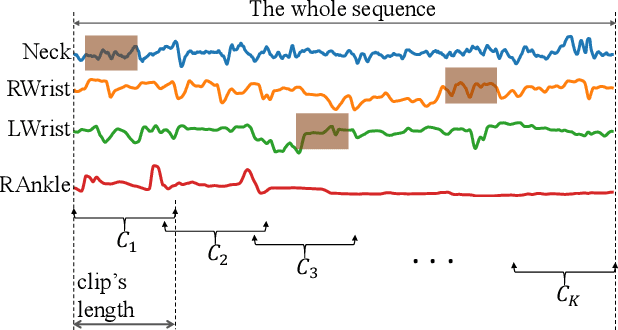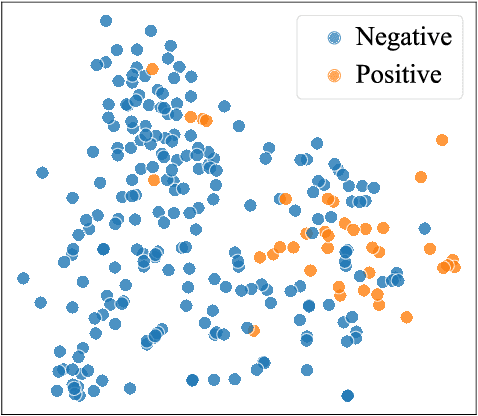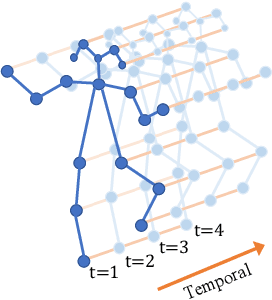Binh Nguyen-Thai
A Spatio-temporal Attention-based Model for Infant Movement Assessment from Videos
May 20, 2021



Abstract:The absence or abnormality of fidgety movements of joints or limbs is strongly indicative of cerebral palsy in infants. Developing computer-based methods for assessing infant movements in videos is pivotal for improved cerebral palsy screening. Most existing methods use appearance-based features and are thus sensitive to strong but irrelevant signals caused by background clutter or a moving camera. Moreover, these features are computed over the whole frame, thus they measure gross whole body movements rather than specific joint/limb motion. Addressing these challenges, we develop and validate a new method for fidgety movement assessment from consumer-grade videos using human poses extracted from short clips. Human poses capture only relevant motion profiles of joints and limbs and are thus free from irrelevant appearance artifacts. The dynamics and coordination between joints are modeled using spatio-temporal graph convolutional networks. Frames and body parts that contain discriminative information about fidgety movements are selected through a spatio-temporal attention mechanism. We validate the proposed model on the cerebral palsy screening task using a real-life consumer-grade video dataset collected at an Australian hospital through the Cerebral Palsy Alliance, Australia. Our experiments show that the proposed method achieves the ROC-AUC score of 81.87%, significantly outperforming existing competing methods with better interpretability.
 Add to Chrome
Add to Chrome Add to Firefox
Add to Firefox Add to Edge
Add to Edge